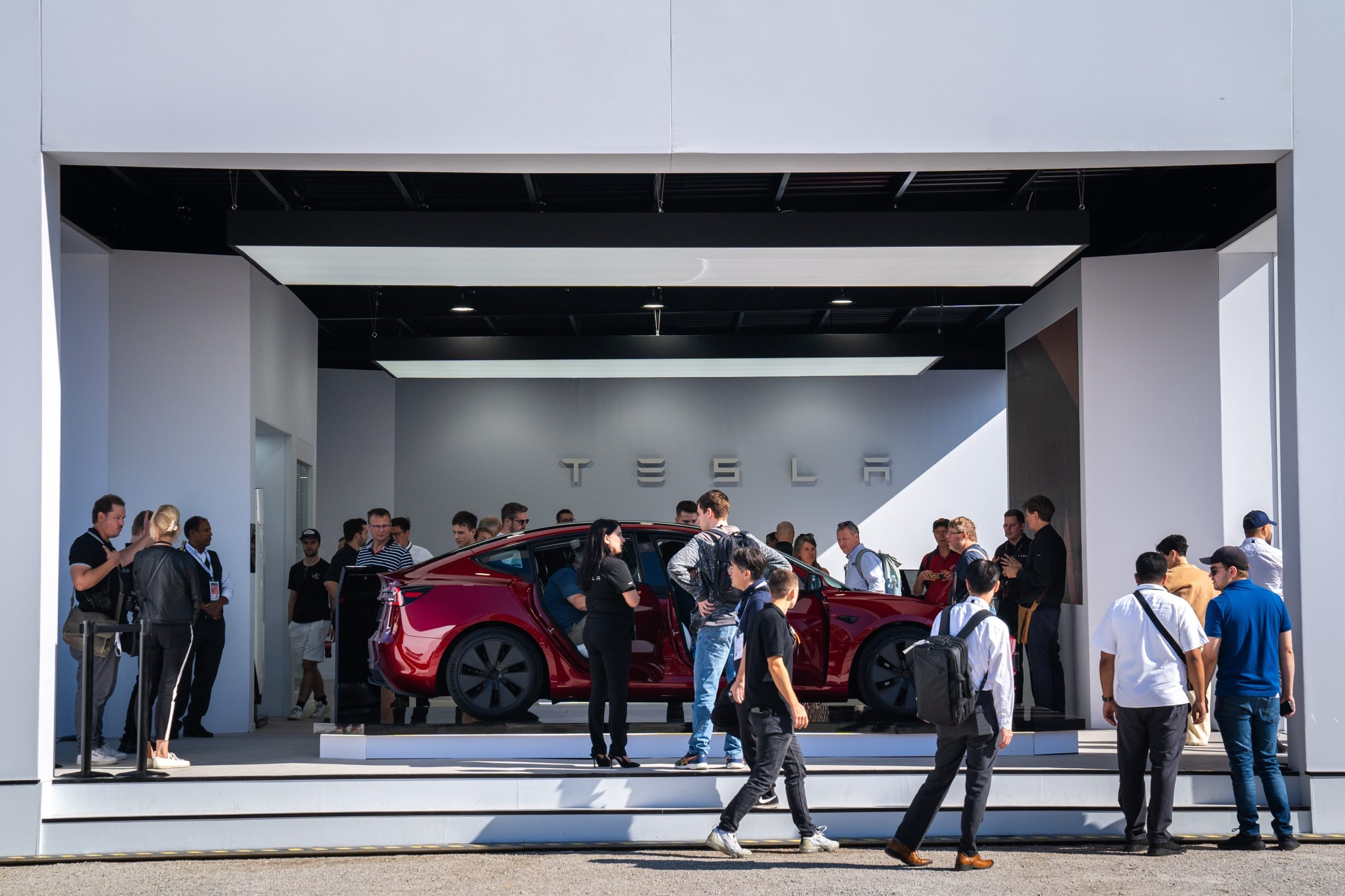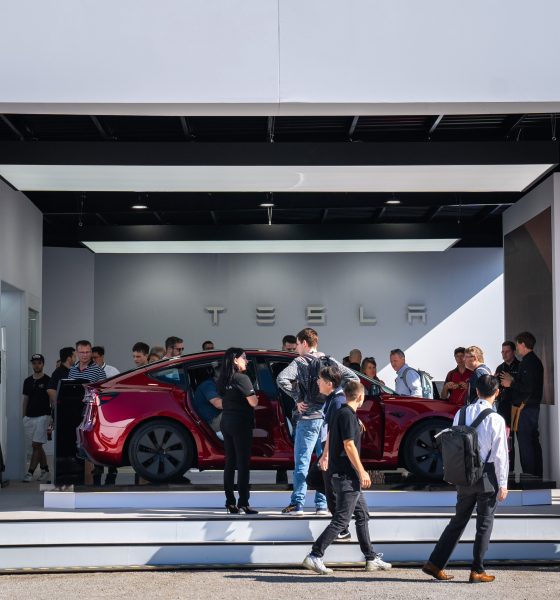

News
Tesla has filed a petition with Wisconsin to allow direct car sales
Tesla has filed an official petition with the state of Wisconsin to let the company sell cars directly to consumers, coming as the latest in the company’s attempts to overturn direct sales bans across several U.S. states.
After Tesla officially filed the petition with the Outagamie County Circuit Court last month, the court has received responses from multiple parties in filings earlier this month. Such parties include the Wisconsin Department of Transportation and the Wisconsin Automobile and Truck Dealers Association, and the court has officially set a hearing date on the petition.
Currently, Wisconsin is just one of many states in which Tesla buyers must drive out of state to purchase and pick up one of the company’s vehicles, due to laws requiring automakers to sell vehicles through a dealership. While Tesla, Rivian and other direct sales companies have gained some ground in overturning these laws, many states including Wisconsin still prohibit the model.
The Circuit Court has set a motion hearing for the case for March 24. The case number for for Tesla, Inc. vs. Wisconsin Department of Transportation et al is 2025CV000075, and you can see the case filing here on the Wisconsin courts website.
READ MORE ON DIRECT SALES LAWS: Tesla granted license for direct vehicle sales in Kentucky
Across the U.S., there are 22 different states that either have active bans on direct vehicle sales or limitations on how many stores direct sales automakers like Tesla can open. The efforts to overturn such bans last year gained some ground in Kentucky, where Tesla was granted a license for direct sales in August, as well as in Louisiana, where an appeals court backed the company in its right to sue the state over dealership laws.
Other automakers such as Lucid Motors, Rivian and, more recently, Volkswagen’s new venture Scout Motors have faced opposition from dealers and dealership lobbying groups such as the aforementioned Wisconsin Automobile and Truck Dealers Association, ultimately upholding the bans in several states.
Some other states that don’t have bans on direct vehicle sales, such as Florida, have also introduced new legislation in the past few years attempting to ban direct sales.
Below you can see which U.S. states still have direct vehicle sales bans in place, and which either limit stores or allow Tesla to sell direct-to-consumer through loopholes.
Which U.S. states still have bans on direct vehicle sales?
- Alabama (including service centers)
- Arkansas
- Connecticut (only leasing is allowed, and the company also uses a tribal land loophole)
- Iowa
- Kansas (including storefronts)
- Louisiana (Tesla uses special license with “service center” model as loophole)
- Nebraska
- New Mexico (including service centers, and the company also uses a tribal land loophole)
- Oklahoma
- South Carolina (includes service centers)
- Texas (Tesla gets online loophole with “service center” model)
- West Virginia (including storefronts)
- Wisconsin
U.S. states that limit the number of direct sales-eligible stores
- Illinois (limited to 13)
- Maryland (limited to 4)
- Mississippi (limited to 1)
- New Jersey (limited to 4)
- New York (limited to 5)
- North Carolina (limited to 6)
- Ohio (limited to 3)
- Pennsylvania (limited to 5)
- Virginia (limited to 5)
What are your thoughts? Let me know at zach@teslarati.com, find me on X at @zacharyvisconti, or send us tips at tips@teslarati.com.
Tesla loses direct sales lawsuit that aimed to fight stressful carbuying
Need accessories for your Tesla? Check out the Teslarati Marketplace:

News
Tesla FSD fleet is nearing 7 billion total miles, including 2.5 billion city miles
As can be seen on Tesla’s official FSD webpage, vehicles equipped with the system have now navigated over 6.99 billion miles.

Tesla’s Full Self-Driving (Supervised) fleet is closing in on almost 7 billion total miles driven, as per data posted by the company on its official FSD webpage.
These figures hint at the massive scale of data fueling Tesla’s rapid FSD improvements, which have been quite notable as of late.
FSD mileage milestones
As can be seen on Tesla’s official FSD webpage, vehicles equipped with the system have now navigated over 6.99 billion miles. Tesla owner and avid FSD tester Whole Mars Catalog also shared a screenshot indicating that from the nearly 7 billion miles traveled by the FSD fleet, more than 2.5 billion miles were driven inside cities.
City miles are particularly valuable for complex urban scenarios like unprotected turns, pedestrian interactions, and traffic lights. This is also the difference-maker for FSD, as only complex solutions, such as Waymo’s self-driving taxis, operate similarly on inner-city streets. And even then, incidents such as the San Francisco blackouts have proven challenging for sensor-rich vehicles like Waymos.
Tesla’s data edge
Tesla has a number of advantages in the autonomous vehicle sector, one of which is the size of its fleet and the number of vehicles training FSD on real-world roads. Tesla’s nearly 7 billion FSD miles then allow the company to roll out updates that make its vehicles behave like they are being driven by experienced drivers, even if they are operating on their own.
So notable are Tesla’s improvements to FSD that NVIDIA Director of Robotics Jim Fan, after experiencing FSD v14, noted that the system is the first AI that passes what he described as a “Physical Turing Test.”
“Despite knowing exactly how robot learning works, I still find it magical watching the steering wheel turn by itself. First it feels surreal, next it becomes routine. Then, like the smartphone, taking it away actively hurts. This is how humanity gets rewired and glued to god-like technologies,” Fan wrote in a post on X.
News
Tesla starts showing how FSD will change lives in Europe
Local officials tested the system on narrow country roads and were impressed by FSD’s smooth, human-like driving, with some calling the service a game-changer for everyday life in areas that are far from urban centers.

Tesla has launched Europe’s first public shuttle service using Full Self-Driving (Supervised) in the rural Eifelkreis Bitburg-Prüm region of Germany, demonstrating how the technology can restore independence and mobility for people who struggle with limited transport options.
Local officials tested the system on narrow country roads and were impressed by FSD’s smooth, human-like driving, with some calling the service a game-changer for everyday life in areas that are far from urban centers.
Officials see real impact on rural residents
Arzfeld Mayor Johannes Kuhl and District Administrator Andreas Kruppert personally tested the Tesla shuttle service. This allowed them to see just how well FSD navigated winding lanes and rural roads confidently. Kruppert said, “Autonomous driving sounds like science fiction to many, but we simply see here that it works totally well in rural regions too.” Kuhl, for his part, also noted that FSD “feels like a very experienced driver.”
The pilot complements the area’s “Citizen Bus” program, which provides on-demand rides for elderly residents who can no longer drive themselves. Tesla Europe shared a video of a demonstration of the service, highlighting how FSD gives people their freedom back, even in places where public transport is not as prevalent.
What the Ministry for Economic Affairs and Transport says
Rhineland-Palatinate’s Minister Daniela Schmitt supported the project, praising the collaboration that made this “first of its kind in Europe” possible. As per the ministry, the rural rollout for the service shows FSD’s potential beyond major cities, and it delivers tangible benefits like grocery runs, doctor visits, and social connections for isolated residents.
“Reliable and flexible mobility is especially vital in rural areas. With the launch of a shuttle service using self-driving vehicles (FSD supervised) by Tesla in the Eifelkreis Bitburg-Prüm, an innovative pilot project is now getting underway that complements local community bus services. It is the first project of its kind in Europe.
“The result is a real gain for rural mobility: greater accessibility, more flexibility and tangible benefits for everyday life. A strong signal for innovation, cooperation and future-oriented mobility beyond urban centers,” the ministry wrote in a LinkedIn post.
News
Tesla China quietly posts Robotaxi-related job listing
Tesla China is currently seeking a Low Voltage Electrical Engineer to work on circuit board design for the company’s autonomous vehicles.

Tesla has posted a new job listing in Shanghai explicitly tied to its Robotaxi program, fueling speculation that the company is preparing to launch its dedicated autonomous ride-hailing service in China.
As noted in the listing, Tesla China is currently seeking a Low Voltage Electrical Engineer to work on circuit board design for the company’s autonomous vehicles.
Robotaxi-specific role
The listing, which was shared on social media platform X by industry watcher @tslaming, suggested that Tesla China is looking to fill the role urgently. The job listing itself specifically mentions that the person hired for the role will be working on the Low Voltage Hardware team, which would design the circuit boards that would serve as the nervous system of the Robotaxi.
Key tasks for the role, as indicated in the job listing, include collaboration with PCB layout, firmware, mechanical, program management, and validation teams, among other responsibilities. The role is based in Shanghai.
China Robotaxi launch
China represents a massive potential market for robotaxis, with its dense urban centers and supportive policies in select cities. Tesla has limited permission to roll out FSD in the country, though despite this, its vehicles have been hailed as among the best in the market when it comes to autonomous features. So far, at least, it appears that China supports Tesla’s FSD and Robotaxi rollout.
This was hinted at in November, when Tesla brought the Cybercab to the 8th China International Import Expo (CIIE) in Shanghai, marking the first time that the autonomous two-seater was brought to the Asia-Pacific region. The vehicle, despite not having a release date in China, received a significant amount of interest among the event’s attendees.








